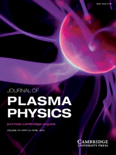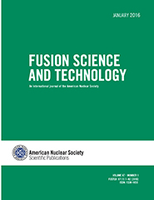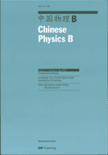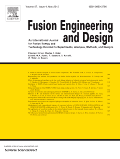
PLASMA SCIENCE & TECHNOLOGY
Scope & Guideline
Exploring Innovative Applications of Plasma Technology
Introduction
Aims and Scopes
- Fundamental Plasma Physics:
Research on the basic principles of plasma behavior, including ionization processes, plasma stability, and wave-particle interactions, which are crucial for advancing both theoretical and experimental plasma science. - Plasma Diagnostics:
Development and application of diagnostic techniques to measure plasma parameters such as density, temperature, and composition, enabling detailed characterization of plasma behavior in various environments. - Plasma Applications in Fusion Energy:
Exploration of plasma behavior in fusion devices, including tokamaks and stellarators, focusing on confinement, heating methods, and stability issues to improve the viability of nuclear fusion as a sustainable energy source. - Environmental and Industrial Applications of Plasma:
Investigation of plasma technologies for environmental remediation, surface treatment, and material synthesis, highlighting the potential of plasmas in industry and environmental science. - Plasma Modeling and Simulation:
Utilization of computational methods and simulations to understand plasma dynamics, transport phenomena, and interactions with materials, contributing to both fundamental research and practical applications.
Trending and Emerging
- Plasma for Environmental Applications:
Increasing research into the use of plasma technology for environmental remediation, including the degradation of pollutants and waste treatment, highlighting the role of plasmas in sustainable practices. - Advanced Fusion Research:
A growing emphasis on advanced fusion concepts, including alternative confinement methods and innovative heating techniques, as researchers seek to overcome challenges in achieving practical nuclear fusion. - Artificial Intelligence and Machine Learning in Plasma Research:
The integration of machine learning and AI techniques in plasma diagnostics and modeling is on the rise, showcasing the potential for data-driven approaches to enhance experimental and theoretical plasma studies. - Plasma Medicine:
Emerging studies on the applications of plasma in medical fields, particularly in sterilization, wound healing, and cancer treatment, are gaining traction, indicating a burgeoning interdisciplinary approach. - Nanostructured Materials Synthesis via Plasma Techniques:
Research into the synthesis of nanomaterials using plasma processes is trending, driven by the unique properties of plasmas that facilitate the production of novel materials with tailored characteristics.
Declining or Waning
- Low-Temperature Plasma Research:
Research focused on low-temperature plasmas, particularly for applications in electronics and materials processing, appears to be declining as interest shifts towards high-energy plasmas and fusion-related studies. - Basic Gas Discharge Phenomena:
Studies on fundamental gas discharge phenomena without significant application or technological focus are becoming less prevalent, as the field moves towards more applied research with immediate industrial relevance. - Conventional Plasma Generation Techniques:
Traditional methods of plasma generation, such as DC discharges and simple RF systems, are being overshadowed by more innovative and efficient techniques, leading to a decrease in publications in this area.
Similar Journals

JOURNAL OF PLASMA PHYSICS
Exploring the dynamics of plasma phenomena.Welcome to the JOURNAL OF PLASMA PHYSICS, a premier publication dedicated to advancing understanding and research in the field of plasma physics. Published by Cambridge University Press, this journal has been a pivotal resource since its inception in 1967, supporting scholars and professionals engaged in the innovative exploration of plasma phenomena. With an impressive Q1 rating in Condensed Matter Physics, the journal not only holds a significant position in the academic community but also ranks within the top 50th percentile in the Scopus database. Although it currently does not offer open access, the journal provides a wealth of valuable research contributions aimed at fostering knowledge and collaboration among researchers, professionals, and students alike. The Journal of Plasma Physics is committed to publishing high-quality articles that push the boundaries of knowledge, ensuring its vital role in the ever-evolving landscape of physics research.

JOURNAL OF FUSION ENERGY
Exploring breakthroughs that power the next generation of energy.The Journal of Fusion Energy, published by Springer, stands as a significant platform for advancing the field of nuclear energy and high-energy physics. With an ISSN of 0164-0313 and an E-ISSN of 1572-9591, this journal has been pivotal for researchers since its inception, tracking the latest innovations and research breakthroughs from 1981 to 1983 and continuing its legacy from 1985 to 2024. Recognized as a Q2 journal in both the Nuclear and High Energy Physics and Nuclear Energy and Engineering categories for 2023, it boasts a respectable Scopus ranking that places it among the top journals in its field—ranking #37 out of 77 in Nuclear Energy and Engineering and #50 out of 87 in Physics and Astronomy. Although it does not offer open access options, the journal remains a crucial resource for professionals, researchers, and students striving to stay informed on the pivotal developments in fusion energy research. Its comprehensive articles are designed to engage the academic community, paving the way for new paradigms in energy production and sustainability.

FUSION SCIENCE AND TECHNOLOGY
Advancing sustainable energy through innovative fusion research.FUSION SCIENCE AND TECHNOLOGY is a leading peer-reviewed journal published by Taylor & Francis Inc., dedicated to the advancement of knowledge in the fields of nuclear science, engineering, and fusion technology. With an impact factor that reflects its growing significance, this journal provides a platform for innovative research that addresses the challenges and opportunities within Civil and Structural Engineering, Materials Science, Mechanical Engineering, and Nuclear Energy and Engineering. Its open access option facilitates wider dissemination of groundbreaking research, enhancing visibility and accessibility for researchers, professionals, and students alike. As a member of the Q2 and Q3 Quartiles across various categories—demonstrating its reputable standing among peers—the journal plays a crucial role in fostering collaboration and sharing the latest scientific discoveries in fusion and related technologies from 2001 until 2024. This makes it an essential resource for anyone engaged in the multidisciplinary aspects of fusion science, contributing to the development of sustainable energy solutions.

PLASMA CHEMISTRY AND PLASMA PROCESSING
Connecting Researchers to the Pulse of Plasma TechnologyPLASMA CHEMISTRY AND PLASMA PROCESSING, published by SPRINGER, is a premier journal dedicated to advancing the field of plasma chemistry and its applications in processing technologies. Established in 1981, this journal has attained a strong impact in its field, reflecting its Q2 rankings in several categories including Chemical Engineering, Chemistry, and Condensed Matter Physics. It serves as a crucial platform for researchers, professionals, and students aiming to explore innovative plasma-based techniques and solutions for diverse applications, including materials synthesis and surface engineering. Through rigorous peer-reviewed articles and comprehensive studies, this journal underscores the significance of plasma processes in contemporary scientific and industrial landscapes, fostering knowledge exchange and emerging trends up to the year 2024. With its strategic focus on cutting-edge research, PLASMA CHEMISTRY AND PLASMA PROCESSING remains an essential resource for those committed to the enhancement and evolution of plasma technologies.

Chinese Physics B
Unveiling groundbreaking research for a global audience.Chinese Physics B, published by IOP Publishing Ltd, is a distinguished journal in the field of Physics and Astronomy, offering a platform for researchers to disseminate cutting-edge studies and advancements. With an ISSN of 1674-1056 and an E-ISSN of 2058-3834, this journal emphasizes open access, ensuring that groundbreaking research is readily available to a global audience. Reflecting its commitment to quality, Chinese Physics B is categorized in the Q3 quartile (2023) in its subject area and ranks 118 out of 243 among its peers in general physics and astronomy according to Scopus, placing it in the 51st percentile. Publishing since 2008, the journal not only maintains a rigorous peer-review process but also aims to foster collaboration among academics in various physics disciplines. With its base in the United Kingdom, Chinese Physics B remains a crucial resource for those seeking to stay abreast of developments in the diverse world of physics.

PRAMANA-JOURNAL OF PHYSICS
Exploring the Depths of Theoretical and Experimental ResearchPRAMANA-JOURNAL OF PHYSICS, published by the esteemed Indian Academy of Sciences, serves as a pivotal platform for disseminating high-quality research in the field of Physics and Astronomy. Established in 1973, this journal aims to promote significant findings in various branches of physics, encapsulating both theoretical and experimental research. With a solid reputation reflected in its Q2 ranking in the Physics and Astronomy (miscellaneous) category and a commendable 94/243 rank in the Scopus database, PRAMANA stands at the forefront of the academic community. Researchers, professionals, and students benefit from its accessible compilation of innovative studies, contributing richly to the scholarly discourse. The journal, operating from its base in Bangalore, India, is committed to advancing knowledge through rigorous peer-reviewed articles, ensuring that all contributions hold merit in expanding our understanding of the physical world.

Applied Physics Express
Pioneering Advances in Physics and EngineeringApplied Physics Express, published by IOP Publishing Ltd, is a leading journal that focuses on the rapid dissemination of research in applied physics, aimed at both academia and industry professionals. Operating from Japan, this prestigious journal features a broad scope within the domains of engineering and physics and astronomy, earning a significant place in the research community, as evidenced by its Q2 ranking in both disciplines for 2023. With a commitment to excellence, Applied Physics Express provides a platform for authors to share their innovative findings, promoting collaboration and advancement in the field. Its impact is further highlighted by its solid performance in Scopus rankings, featuring prominently within the engineering and physics categories. Although the journal does not currently operate under an open access model, it is dedicated to ensuring that high-quality research is accessible to its readers. Researchers, students, and professionals can find invaluable insights and cutting-edge studies within its pages, making it an essential resource for those engaged in applied physics and its interdisciplinary applications.

FUSION ENGINEERING AND DESIGN
Transforming Ideas into Energy Solutions.FUSION ENGINEERING AND DESIGN is a premier scientific journal published by Elsevier Science SA, dedicated to advancing the field of fusion engineering, materials science, and related disciplines. Established in 1985 and running through 2024, this journal features cutting-edge research that spans multiple categories, including Civil and Structural Engineering, Mechanical Engineering, Materials Science, and Nuclear Energy and Engineering, holding a notable Q2 quartile ranking in each field as of 2023. Catering to a global audience of researchers and professionals, FUSION ENGINEERING AND DESIGN emphasizes the importance of interdisciplinary collaboration and innovative technology in tackling the complex challenges associated with fusion energy. Although it does not offer Open Access, the journal remains an essential resource for those seeking to stay abreast of developments that could shape the future of energy solutions and engineering methodologies. With a dedicated editorial board and a commitment to high-impact publication, this journal serves as a vital platform for disseminating transformative ideas and driving forward the scientific dialogue in fusion engineering.

PLASMA PHYSICS REPORTS
Catalyzing Discoveries in Plasma Physics ApplicationsPLASMA PHYSICS REPORTS, published by PLEIADES PUBLISHING INC, is a distinguished journal that caters to the intricate and evolving field of plasma physics and its applications within condensed matter physics and astronomy. With an ISSN of 1063-780X and an E-ISSN of 1562-6938, the journal serves as a pivotal platform for researchers, professionals, and students to disseminate groundbreaking work and foster collaboration among experts in the field. The journal operates as a non-open access resource, contributing to its reputation for curating high-quality research findings. Over its converged years from 1996 to 2024, the journal has established itself within the Q3 category across both condensed matter physics and miscellaneous physics and astronomy in the 2023 quartiles. With current Scopus rankings placing it in the 42nd percentile for physics and astronomy and the 27th percentile for condensed matter physics, PLASMA PHYSICS REPORTS stands as a vital resource for advancing knowledge and innovation in plasma research.

Moscow University Physics Bulletin
Connecting Researchers with Pioneering InsightsMoscow University Physics Bulletin is a distinguished journal published by PLEIADES PUBLISHING INC, focusing on a broad spectrum of topics within the field of physics and astronomy. Since its inception, the journal has championed the dissemination of innovative research and advancements, making significant contributions to the academic community. Although currently categorized in the Q4 quartile and ranked #208/243 in the general physics and astronomy field by Scopus, it provides a valuable platform for emerging ideas and discussions in the sector. The journal's publication span, encompassing crucial years from 1975 to 1977, 1982 to 1989, and 2009 to 2024, showcases its resilience and commitment to advancing knowledge. While the journal follows a traditional access model, its content remains pivotal for researchers, professionals, and students aiming to stay abreast of the latest developments in physics. With contributions reflecting both theoretical advancements and practical applications, Moscow University Physics Bulletin is an essential resource for anyone looking to deepen their understanding of contemporary physics.